
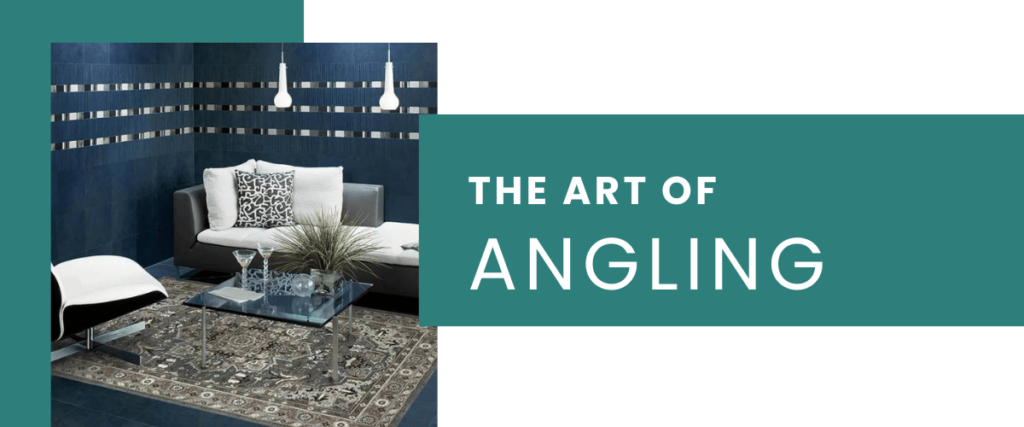
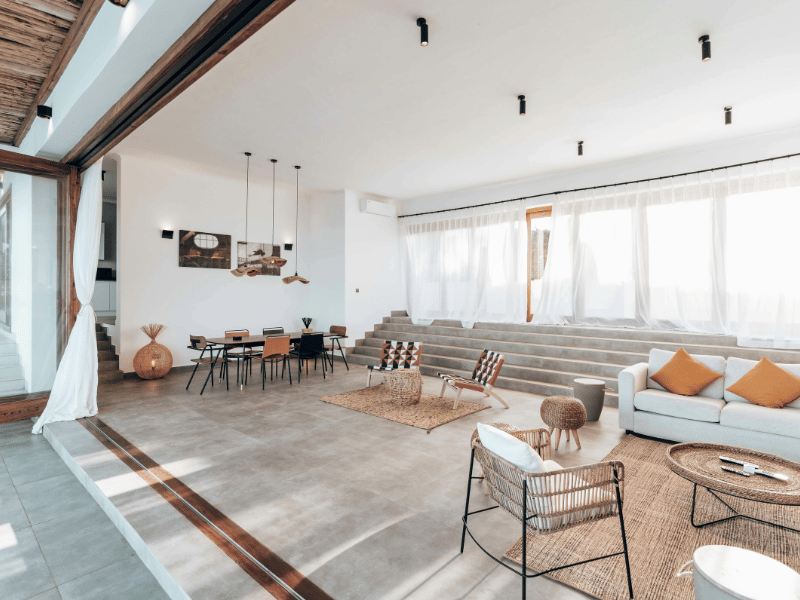
An unexpected perspective makes a dramatic difference in any room. Instead of arranging the bed and rug in traditional alignment, a new twist might be to angle the rug underneath (as above); or angle the bed and rug to match. Angling would work beautifully in a living room or home office, as well. It’s a very fresh look.
What is Angling?
Angling, in the context of interior design, involves placing furniture and rugs at creative angles rather than the typical parallel or perpendicular alignments to the walls. This technique disrupts the expected symmetry and adds a layer of depth and intrigue to the room. It’s a simple yet effective way to breathe new life into your home decor.
The Bedroom: A Place of Rest and Creativity
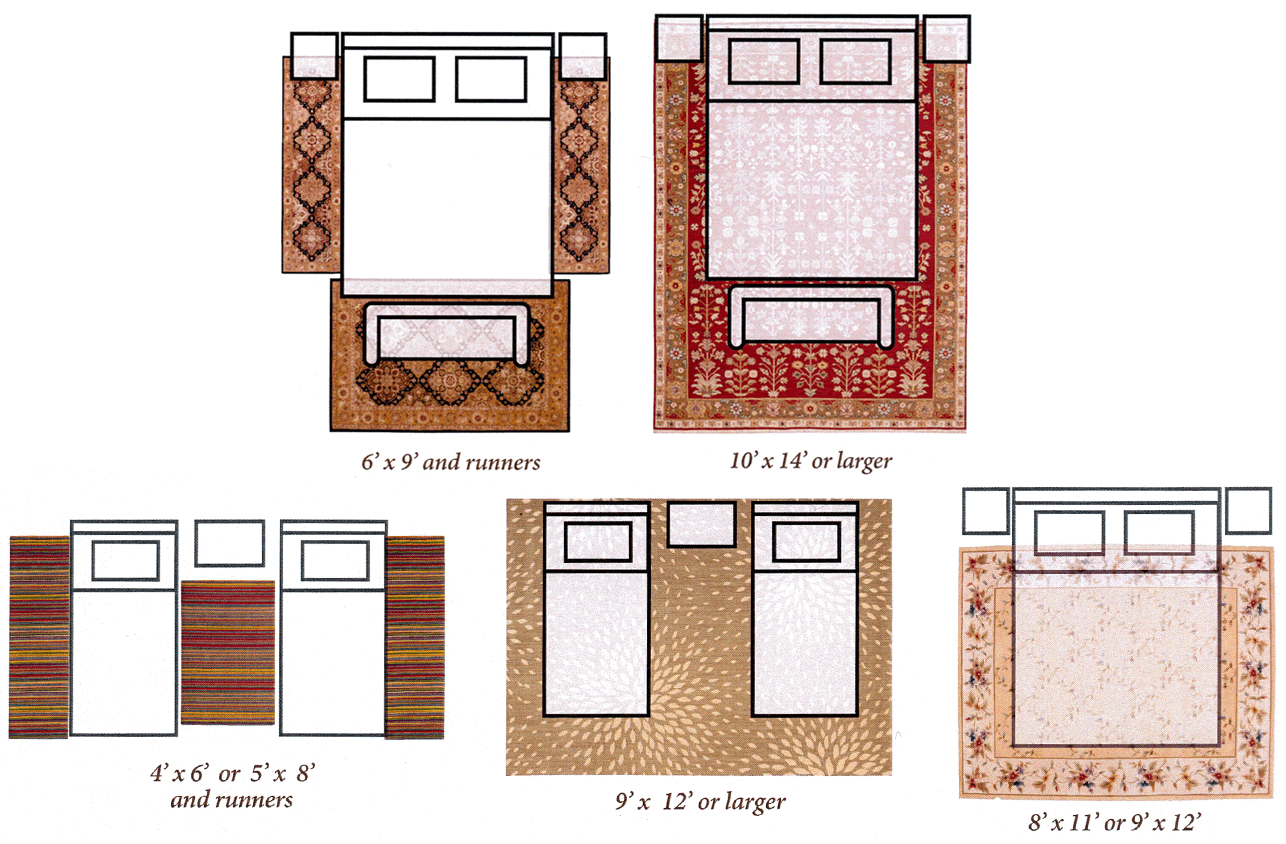
Traditionally, beds and rugs in bedrooms are aligned parallel to the walls. However, angling these elements can create a surprising and delightful impact. For example, placing the bed at a 45-degree angle to the corner of the room can make the space feel larger and more open. This placement allows for a more fluid movement within the room and can create a cozy, intimate nook.
Consider a bedroom where a large, round rug is angled beneath the bed. Instead of the rug’s edges aligning with the walls, the rug’s circular shape complements the angled bed, creating a harmonious yet unexpected visual. This arrangement draws the eye and provides a focal point that sets the tone for the room’s decor.
The Living Room: A Space for Socializing and Relaxation
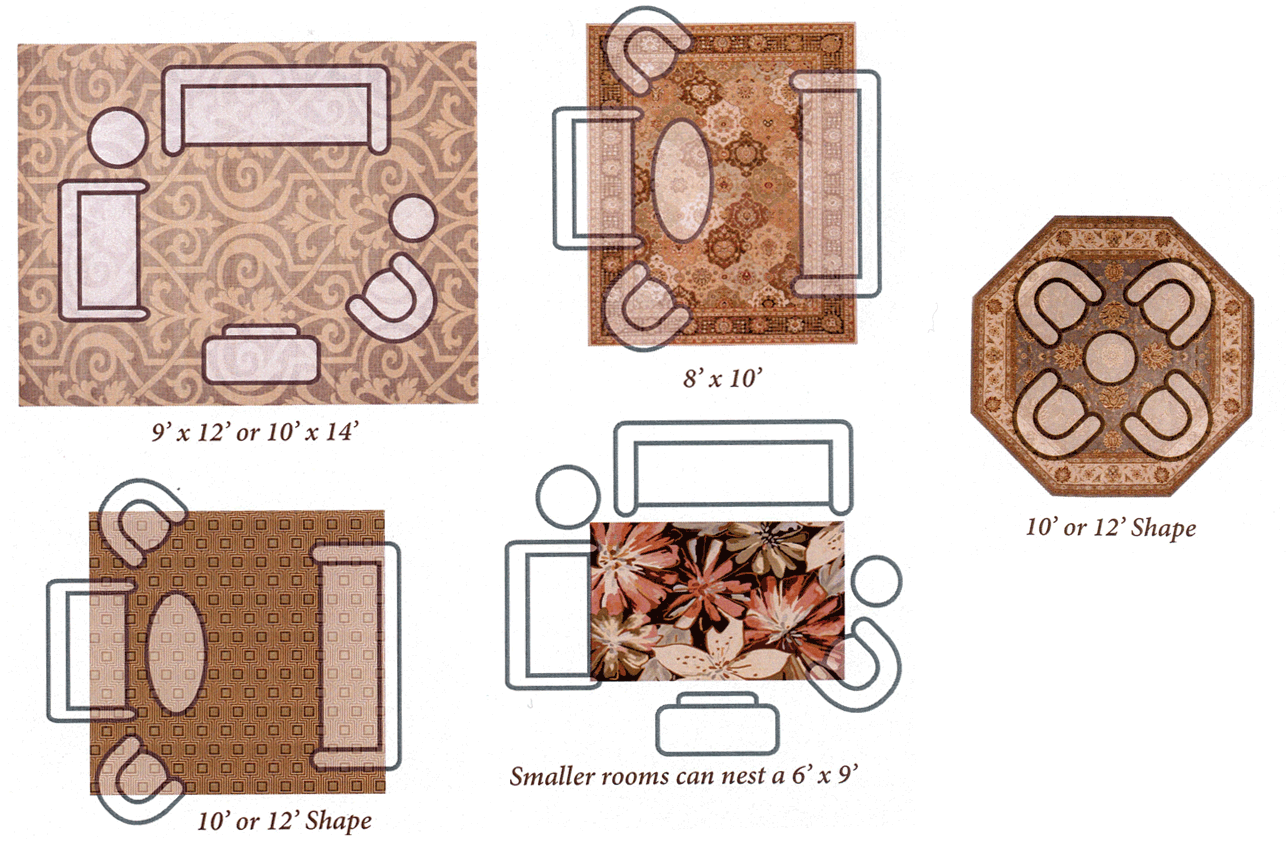
Angling isn’t just for bedrooms; it works beautifully in living rooms as well. Traditional living room layouts often position sofas and coffee tables parallel to walls or centered in the middle of the room. By angling these pieces, you can create a more dynamic and conversational space.
Imagine a living room where a large sectional sofa is angled towards a corner fireplace, rather than facing it head-on. This placement not only opens up the floor space but also creates a more engaging seating arrangement. An angled coffee table and rug can further enhance this setup, making the room feel more inviting and less predictable.
The Home Office: A Hub of Productivity

In a home office, angling your desk can foster creativity and productivity. Instead of the desk facing the wall or window directly, try placing it at an angle. This orientation can make the room feel less rigid and more inspiring, which is crucial for a productive workspace.
In Conclusion
The art of angling is a simple yet powerful design technique that can transform any room. By rethinking the traditional alignments of furniture and rugs, you can create spaces that are visually engaging and uniquely yours. Whether in the bedroom, living room, or home office, angling introduces a fresh perspective that can dramatically enhance the look and feel of your home.










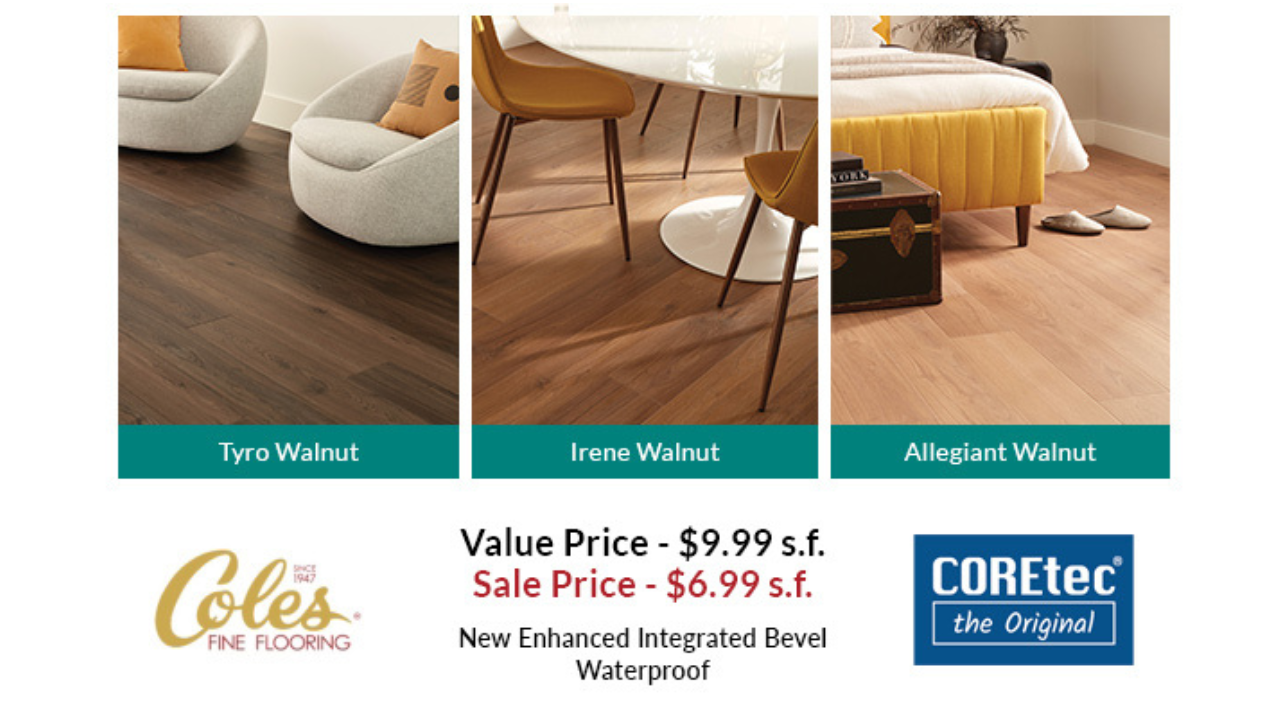

 Prelude Version 2.1
Prelude Version 2.1